Tooth Piercing: Safety, Precautions, Healing, And Aftercare
Discover the jewelry styles and risks associated with this chic and trendy piercing.
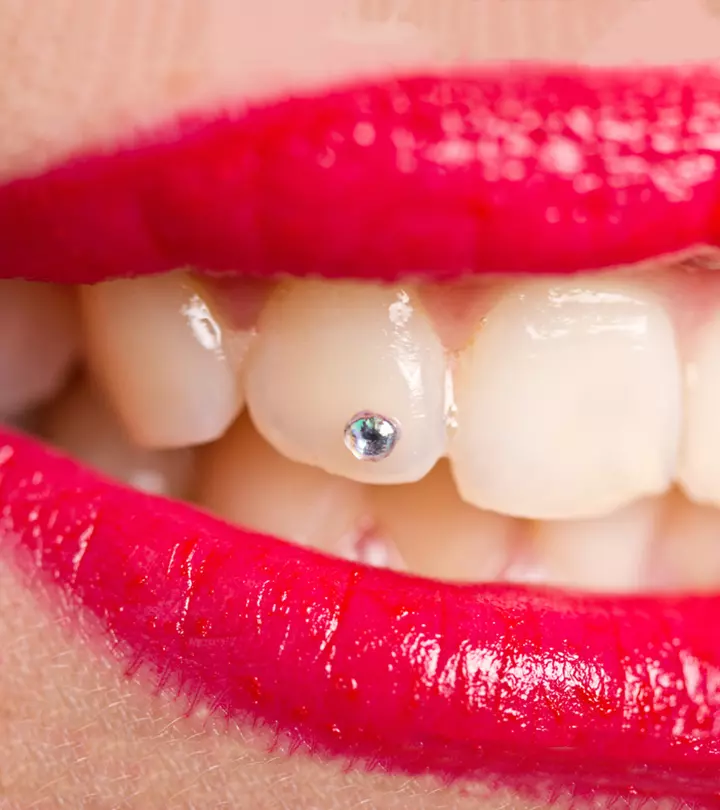
Image: Shutterstock
Tooth piercings have crossed traditional grills on the popularity scale and are now the talk of the town. Celebrities like Rihanna, Pink, Hailey Bieber, and Bella Hadid have all embraced this eye-catching piercing style. Unlike traditional body piercings, an expert attaches a small jewel or stone to the tooth’s surface to create a stylish and edgy look.
A tooth piercing is all about giving your tooth a touch of glam. Whether you are into the idea of a diamond tooth gem or good old crystals, tooth piercings are a fun way to flaunt your unique style. But how safe is it? In this article, we will discuss the same, and also look into its costs, aftercare tips, and the risks associated with it. Read on!
 Piercing Guide: Tooth Piercing
Piercing Guide: Tooth Piercing- Placement: On the surface of the tooth
- Best Jewelry: Diamonds, opals, and crystal covers or studs
- Cost: $25 – $100
- Pain Level: Low
- Healing Time: A few weeks to months
In This Article
What Is A Tooth Piercing?
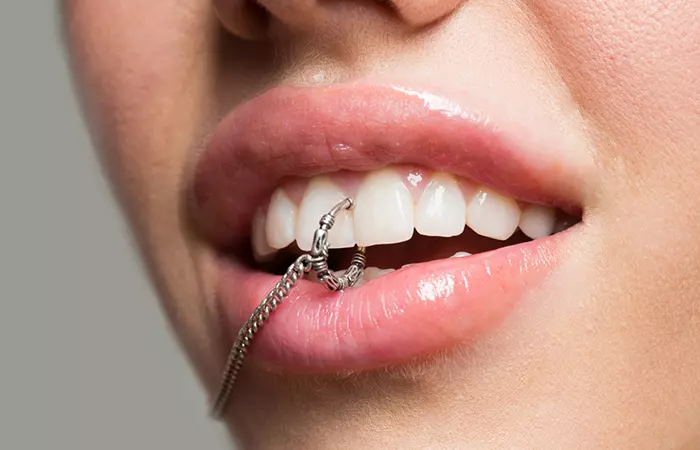
There are many types of body piercing, such as lips, tongue, cheeks, etc., that have carved a niche for themselves in the piercing market. However, tooth piercing, as a unique form of body piercing, has emerged as a fun option for those who want to experiment with their look. A tooth piercing does not require drilling a hole into the tooth. It involves attaching a gem or stone to the tooth’s surface with an adhesive or cement. It is done on the front of the mouth and away from the gum. Since you do not have to undergo any invasive procedure for tooth piercings, they are ideal for anyone hesitant about traditional body piercings.
Apart from being a cool piercing to sport, many people opt for this because of its temporary nature. Temporary tooth piercings last up to 6 weeks, while semi-permanent ones last up to years with proper care and attention.
Tooth piercings sound pretty simple. But are they safe? Find out in the next section.
Key Takeaways
- Tooth piercing involves placing the jewelry on the surface of the teeth without drilling a hole in it.
- This process entails embedding a jewel into a composite material applied to the tooth’s surface.
- You can opt for jewelry styles such as diamonds, crystals, and sapphires to make your tooth piercing stand out.
Are Tooth Piercings Safe?
Tooth piercings are generally considered safe, but it is essential to be aware of the potential issues associated with it before going for it. Some experts have raised concerns about the procedure’s potential to permanently alter the tooth’s surface and advise against getting cosmetic tooth gems and jewelry. On the flip side, some dental professionals argue that with proper application and care, tooth piercings and gems can be relatively low risk. Therefore, it is important to choose a qualified tooth piercer to ensure the procedure is done correctly keeping safe practices and dental health standards in mind.
Before you go for a tooth piercing, it is important to understand the process in detail. Knowing the different types of piercings can also help you make an informed decision, as it will give you insight into the various options available, and how safe they are. Check out the next section to know more.
Tooth Piercing Process
Tooth piercing is a relatively simple and pain-free process. Follow the steps listed below to ensure the successful placement of the tooth jewelry:
- The provider will thoroughly clean the enamel with an acid etch.
- A bonding agent and a composite material (resin) are applied to the area where the jewelry will be placed.
- The provider will use specific instruments to secure the jewelry in the composite.
- A specialized curing lamp is used to harden the composite, which takes between 20 to 60 seconds.
- The provider gives proper aftercare instructions to keep the piercing in place.
The entire tooth piercing procedure takes approximately five minutes, from isolating the tooth to setting the gem in place and curing it with UV light.
 Did You Know?
Did You Know?Unlike conventional piercings, tooth piercings do not require drilling a hole into the tooth. Instead, the chosen jewelry is typically glued onto the tooth. This approach requires the skills and expertise of a trained professional. Scroll down to the next section to find out.
Who Performs The Procedure?
The tooth piercing procedure is typically performed by dental professionals and piercing experts with specialized training in oral procedures. Dentists, in particular, have the necessary knowledge of dental anatomy and the expertise to carry out such procedures safely. In some cases, individuals may seek services from piercing parlors where professionals with specific training in tooth piercings can conduct the procedure.
It is important to note that while the procedure is often straightforward, it involves working with delicate oral structures. This is where the expertise of a trained professional helps ensure the safety and success of the tooth piercing. DIY tooth piercings or seeking services from non-professionals can damage the tooth structure and are generally not recommended by dental health authorities.
Getting a tooth piercing requires careful consideration and research. Before you finalize your decision, scroll down to find out whether it will burn a hole in your pocket or not.
Tooth Piercing Cost
The tooth piercing cost depends on the provider’s experience, the location, and the jewelry type. For instance, a diamond tooth gem will cost more compared to a silver one.
The piercing procedure may cost somewhere between $25 to $100. Therefore, discuss the cost with your expert to help you plan your budget accordingly.
How painful the procedure is and the healing time are two critical factors that play a key role in the individual’s final decision-making process. Find out more about it below.
Tooth Piercing Pain And Healing Time
A tooth piercing is generally considered a low-pain procedure as there is no actual piercing or drilling. However, some people may experience some minor discomfort inside of their lips for a few days after the procedure. While the initial sensation might take getting used to, the overall pain is relatively mild.
The pain associated with a tooth piercing is generally minimal. However, the healing time may depend on factors such as how well the individual adapts, adherence to aftercare instructions, and the body’s natural healing process.
Therefore, following the aftercare routine given by your expert ensures a smooth healing process and reduces the risk of complications. Check out the next section to know more.
Tooth Piercing Aftercare
Proper aftercare is crucial for maintaining the piercing’s longevity and ensuring a healthy healing process. Here are essential tooth piercing aftercare tips:
- Consume soft foods 24 hours after getting the piercing to avoid friction and stress.
- Steer clear of acidic drinks such as coffee and soda as they can potentially erode the freshly formed bond.
- Switch to a soft-bristled toothbrush to minimize irritation around the piercing.
- Refrain from touching or playing with the jewel to avoid disrupting the healing process.
- Avoid consuming sticky foods like toffee, gum, caramel, and licorice as they can pose challenges for the piercing.
- Say no to harsh dental products such as whitening strips or dental bleaching kits as they may decrease the lifespan of the tooth piercing.
Following these aftercare guidelines is key to promoting healing and preventing complications like infections or tooth damage. It is also important to visit your dentist regularly to ensure your piercing remains in good condition. This will also allow your dentist to spot any potential issues early on and offer guidance for proper treatment.
Once your piercing has healed, you can experiment with a wide variety of jewelry to create stunning and visually appealing looks. Find out more in the next section.
Jewelry And Material Used In A Tooth Piercing
Tooth piercing jewelry offers different stylish options that allow individuals to express their unique tastes and personality. Some popular choices for tooth piercing include:
- Diamond
View this post on Instagram
It is more than just a girl’s best friend. This glamorous option is for anyone who wants to add a touch of sophistication and bling to the piercing.
- Opal
View this post on Instagram
These beautiful gems come in various colors of blue, making them perfect for individuals seeking a personalized look and pop of color.
- Crystals
View this post on Instagram
Crystals are for those who prefer a more classy yet subtle style. From clear crystals to vibrant hues, these tooth gems offer a wide range of options allowing for individual and unique looks.
 Quick Tip
Quick TipImproper jewelry placement or negligence of hygiene can increase the risk of developing potential complications. Find out what they are below.
Side Effects And Risks Of Tooth Piercing
It is prudent to be well-informed about the potential risks and complications associated with any procedure before coming to your final decision. Some of the side effects and risks associated with tooth piercing include:
- Allergic Reactions: The glue used for attaching the jewelry, especially those given in DIY kits or under non-professional settings, may cause allergic reactions (1).
- Gum And Cheek Irritation: The metal or jewel may irritate the gums and inner cheek, more so if the jewelry has sharp edges (2).
- Swallowing Hazard: There is a risk of the gem falling out and being swallowed during sleep or eating.
- Enamel Stripping: Improperly removing the glue may damage the enamel. Hence, getting it professionally removed is key (2).
- Bad Breath And Infection: Trapped bacteria or food particles between the gem and tooth can lead to persistent bad breath and an increased risk of infection (2).
Changes in taste or ideals over time may prompt one to go for tooth piercing removal. Check out the next section to know what it involves.
How Do You Remove A Tooth Piercing?
When it comes to removing a tooth piercing, the process varies based on the type. Temporary tooth jewels typically fall off naturally, while semi-permanent gems are removed by a dentist to ensure the tooth remains intact. Avoid attempting a DIY removal as this could potentially remove the enamel. Trusting a dental professional for the removal guarantees a safe and careful process, preserving both the aesthetic and health of your tooth.
Tooth piercings provide a creative avenue for expressing one’s personal style. Their cool appearance, affordability, and minimal health risks make them popular among beginners and enthusiasts alike. However, it is crucial to approach them with caution and seek professional guidance for a safe and enjoyable experience. Therefore, having a clear understanding of the process, potential risks, and aftercare is essential for making an informed decision when considering this piercing.
Frequently Asked Questions
Why get a tooth piercing?
Many people opt for tooth piercings for various reasons. Apart from being a trendy fashion statement, strategically placed piercings can cleverly hide tooth discoloration and divert attention from irregular teeth or small gaps.
Does tooth jewelry make teeth yellow?
Tooth jewelry itself does not make your teeth yellow. However, poor oral hygiene or the accumulation of plaque around the jewelry can lead to discoloration over time. Regular brushing and cleaning around the jewelry can prevent this issue.
Are there any age restrictions for tooth piercing?
Generally, individuals must be 18+ to get tooth piercings. However, ensure you check the local laws and regulations and consult your provider before going for this procedure.
Can tooth piercing damage the neighboring teeth?
Tooth piercing done by a professional typically doesn’t damage neighboring teeth. However, improper placement or accidental trauma can potentially cause damage. Therefore, choose a skilled and experienced professional to minimize such risks.
Can tooth piercing affect speech or eating?
In some cases, tooth piercing may temporarily affect speech or eating habits, especially during the initial adjustment period. However, with proper placement and aftercare, these disruptions should be minimal and short-lived. If you experience persistent issues, consult your dentist or piercer for guidance.
If you are contemplating getting a tooth piercing and are unsure about its safety, don’t worry. We have got you covered. Check out this video to gain important insights into the procedure and decide for yourself!
References
Articles on StyleCraze are backed by verified information from peer-reviewed and academic research papers, reputed organizations, research institutions, and medical associations to ensure accuracy and relevance. Read our editorial policy to learn more.
- Allergic Stomatitis From Orthodontic Adhesives
https://pubmed.ncbi.nlm.nih.gov/28290980/ - Knowledge and awareness of oral and perioral piercing and its complications among the population in Riyadh
https://www.ncbi.nlm.nih.gov/pmc/articles/PMC10424759/
Read full bio of Manjari Uppal
Read full bio of Eshna Das
Read full bio of Aparna Harry




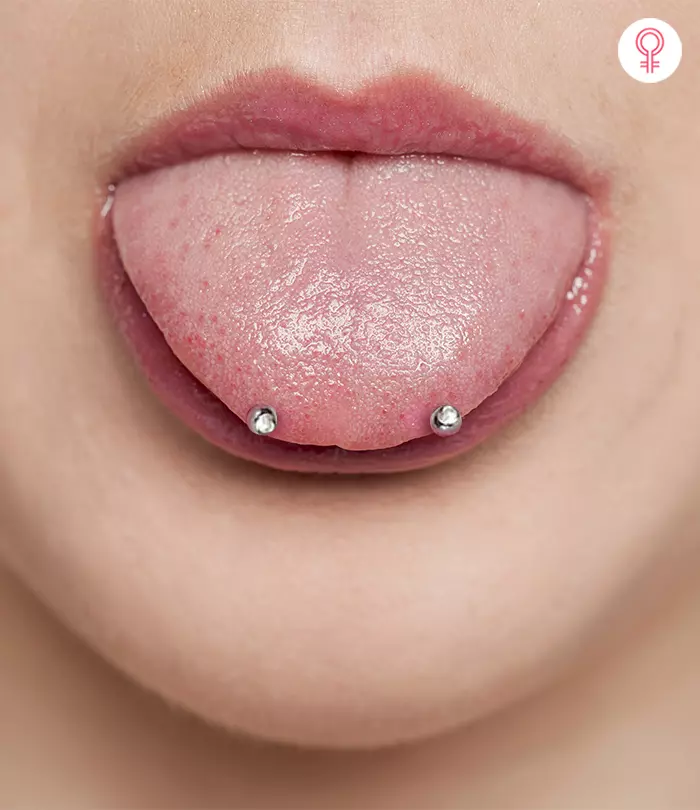

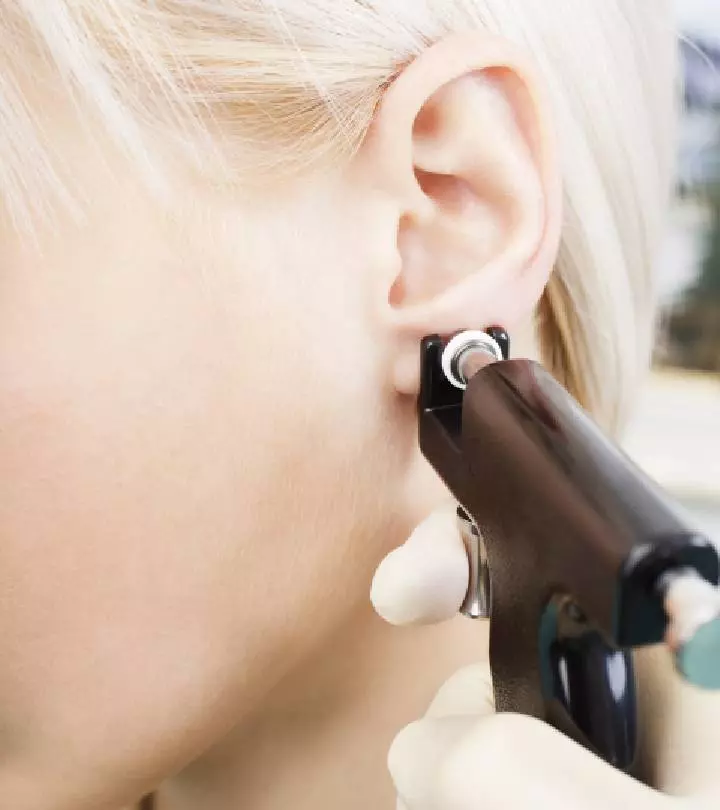

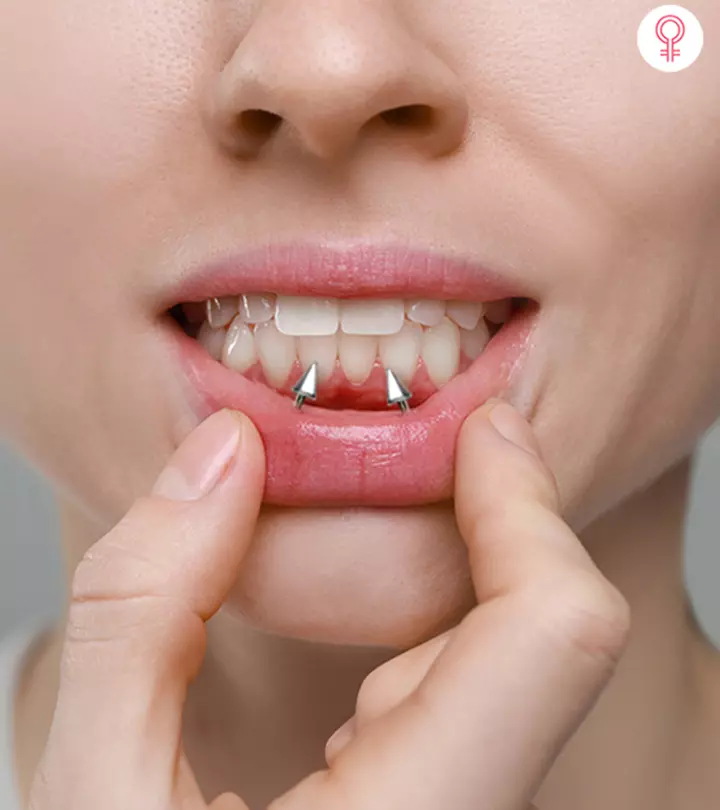

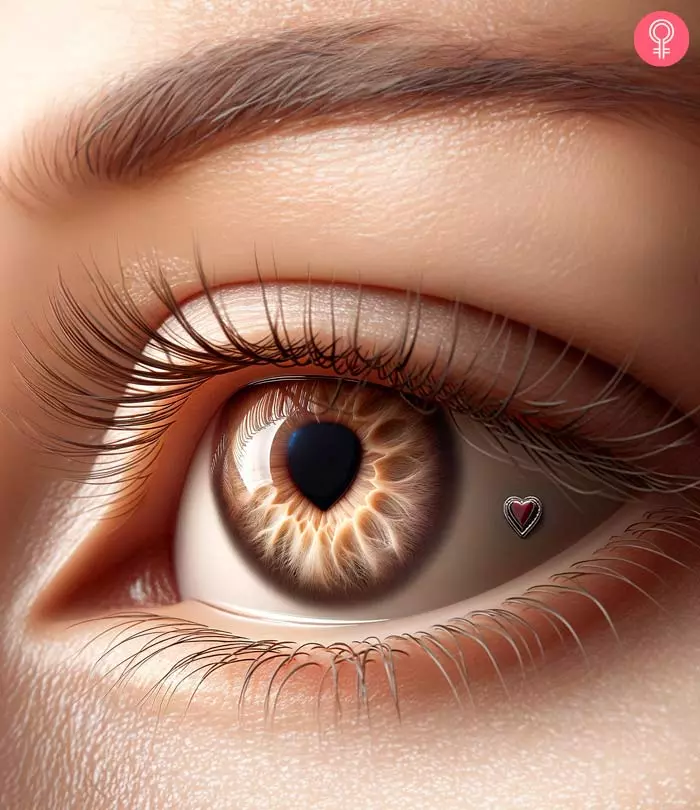


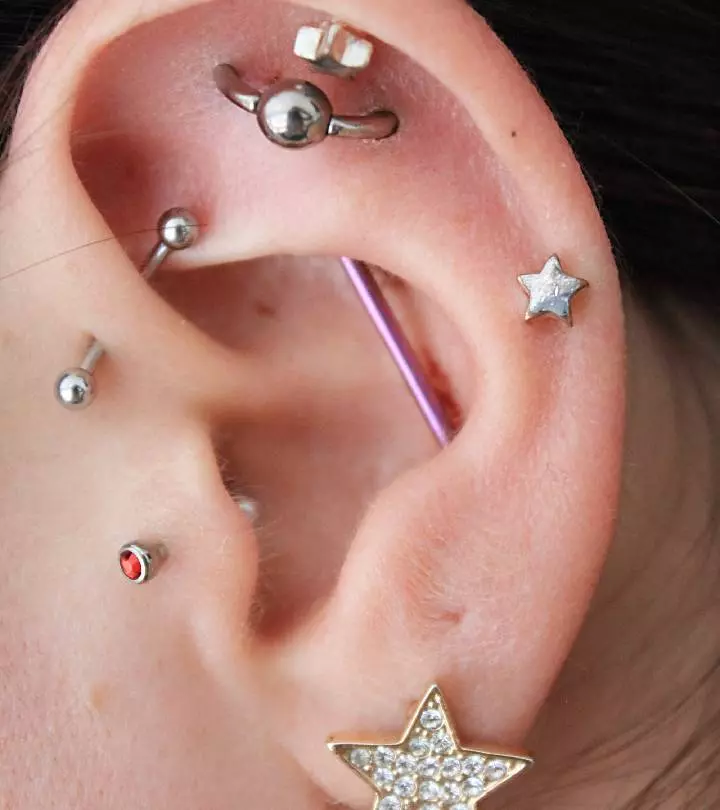


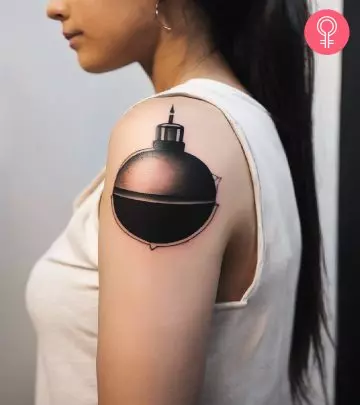








Community Experiences
Join the conversation and become a part of our empowering community! Share your stories, experiences, and insights to connect with other beauty, lifestyle, and health enthusiasts.